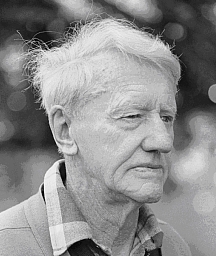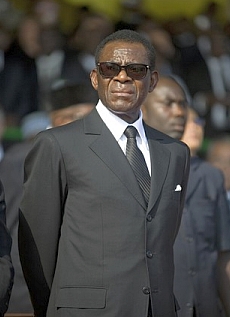The Crimes of Bongo Part IV

Apartheid & Terror in Africa's Gardens of Eden
By Keith Harmon Snow
Keith Harmon Snow is the 2009 Regent's Lecturer in Law & Society at the University of California Santa Barbara, recognized for over a decade of work, outside of academia, contesting official narratives on war crimes, crimes against humanity and genocide while also working as a genocide investigator for the United Nations and other bodies. He is also a past and present (2009) Project Censored award winner.
...Continued from last week
BONGO THE PEACEMAKER
While
Under the cover of ‘humanitarian’ flights, the Bongo government shipped weapons from Libreville to the Biafran war in Nigeria 1967-1970, and Bongo imported Biafran rebels connected to secessionist leader Emeka Ojukwu to luxurious lives in Gabon.
From 1970-1975 France provided over 300 Panhard armored cars to Mobutu in Zaire: this is a footnote in the long history of French arms transfers to dictatorships that served their interests in Africa.62 President Richard M. Nixon met with Bongo on August 2, 1973. At the time, the SDECE (Service de Documentation Exterieure et Contre-Espionage) and CIA were collaborating against the MPLA (Movement for the Popular Liberation of Angola government in Angola by training and arming UNITA and FNLA guerrillas.63 Elf Acquitaine backed both the MPLA government and UNITA rebels: Bongo was certainly involved.64 In 1975, the SDECE hired the infamous Congo mercenary Bob Denard and twenty French mercenaries, all paid by the CIA station out of Zaire —Maurice Tempelsman’s gang Lawrence Devlin, Mark Garsin and others—for covert operations in Angola; the SDECE and CIA also worked with Bureau of State Security (BOSS) agents out of South Africa at the height of the Apartheid struggle.65 Omar Bongo was clearly aware of Washington’s covert terrorist operations in support of UNITA from the 1970’s to 1990’s. Bongo’s government allowed individuals in
 |
|
Ian Smith, former white supremacist leader of Rhodesia, at his home in Harare, Zimbabwe. Photo Keith Harnon Snow, Harare, Zimbabwe, May 2000 |
When Ian Smith’s white supremacist government needed support against the imperialist forces seeking to put a black face on power in Rhodesia, it was Omar Bongo who helped Smith bust the international sanctions by routing through Libreville aircraft ferrying contraband to and from Rhodesia and Europe; networks of organized crime worked through Switzerland and Lichtenstein, and Bongo’s officials in Gabon issued false certificates of origin and other fabricated documentation, while also taking their cut in profits.67
Bongo also maintained relations with
The Bongo government was complicit with the successive Nguema dictatorships (1968-1979, 1979-present) and their campaigns of terror and depopulation in Equatorial Guinea (E.G.). Under Bongo’s rule,
Before his ascendancy to President by coup d’etat in 1979, Teodoro Obiang Nguema personally ran the notorious Black Beach prison in E.G.: his regime is today considered one of the most corrupt, ethnocentric, oppressive and undemocratic states in the world.
 |
|
Equatorial Guinea's President Teodoro Obiang Nguema attends the funeral of Gabonese President Omar Bongo, on June 16, 2009 in Libreville, Gabon. Agence France Presse/Getty Images |
After
On the morning of March 3, 1977, U.S. President Jimmy Carter had a conversation with French President Valery Giscard d'Estaing. Later in the afternoon President Carter met with Omar Bongo; also in attendance were Secretary of State Cyrus R. Vance, Secretary of State, and Assistant for National Security Affairs, Zbigniew Brzezinski, and Robert Bongo, Minister of Foreign Affairs and Cooperation,
In June 2002, Robert Bongo was appointed as a United Nations Special Representative of the Secretary General in the DRC.76 Brzezinski is a high level adviser to the International Crises Group, a flak organization promoting peace through war in
Less than 10 days after Bongo met with Carter the U.S. and Belgium shipped weapons to Shaba (Katanga), Zaire, and on March 16 Secretary of State Vance appeared before the U.S. Congress to justify the intervention as critical to protect the flow of Shaba’s copper from Zaire—but it was actually cobalt of the copperbelt veins, stockpiled by the Department of Defense and essential to the western permanent warfare enterprise—that the national security apparatus was concerned about.78 Bongo met with Carter again on October 17, 1977.
“For 20 years President Bongo has led his country in an era of stability and progress,” said President Ronald Reagan during an October 2, 1987 meeting with Bongo in
Reagan pledged to increase U.S. investment in Gabon—and it happened—and Gabon’s financial programs were subsequently restructured in keeping with western ‘shock doctrine’ economics of Structural Adjustment Programs (SAPs) arranged with and for Bongo’s elite clique. The
The strategic
“Bongo even financed small politicians with no hope,” says one Congolese businessman, “he gave money to everyone, that’s how he maintained access. In DRC, for example, he even gave money to Alou Bonioma Kalokola—a lawyer who has lived his entire life as a hustler. Bonioma was married to [Dennis] Sassou-Nguesso’s step-daughter, and Sassou-Nguesso’s wife is from DRC. Alou knew he would get money from Bongo so he ran for president [in the 2006 elections].”81
To be continued
Footnotes
61Biafra-Nigeria, 1967-1969, Political Affairs, Confidential U.S. State Dept. files, ISBN -88692-756-0.
62 John Stockwell, In Search of Enemies: A CIA Story, Replica Books, 1978: p. 176-192.
63 União Nacional para a Independência Total de Angola (UNITA) and Frente Nacional de Libertação de Angola (FNLA).
64 Toby Shelley, Oil: Politics, Poverty & the Planet, Zed Books, 2005
65 John Stockwell, In Search of Enemies: A CIA Story, Replica Books, 1978: p. 188.
66 See: Report of the Panel of Experts on Violations of Security Council Sanctions Against UNITA, UN Doc S2000/203, 10 March 2000. See also Yearbook of International Humanitarian
67 James Mukuwire, “Omar Bongo Rescued Ian Smith,” Zimbabwe Times, June 11, 2009, http://www.thezimbabwetimes.com/?p=17830Law, 2002.
68 Charles Taylor has the distinction of having attended Harvard University; being arrested in Boston (MA), for international warrants relating to embezzlement of funds in Liberia; being held in a Charlestown (MA) prison; and being ‘broken out’ with no trace or trail of his having been there.
69 See: keith harmon snow and Rick Hines, “Blood Diamond: Doublethink & Deception Over Those Worthless Little Rocks of Desire,” Z Magazine, June & July 2007.
70 Max Liniger-Gourmaz, Small is Not Always Beautiful: The Story of Equatorial Guinea, 1988.
71 Justin
72
73 “
74 See, e.g., Guy Robert, France’s African Policy in Transition: Disengagement and Redeployment, Paper prepared for presentation at the African Studies Interdisciplinary Seminar, Center for African Studies, University of Illinois at Urbana-Champaign, Champaign, Il, March 3, 2000.
75 Daily Diary of Jimmy Carter, March 3, 1977; http://www.jimmycarterlibrary.org/documents/diary/1977/d030377t.pdf
76 Decisions of the Seventy-Sixth Ordinary Session of the OAU Council of Ministers / Eleventh Ordinary Session of the AEC, 28 June to 6 July 2002, Durban, South Africa, CM/Dec. 661-670.
77 “US-Africa: Genuine Leak or Disinformation?”
78 Bernard Gwertzman, Vance Says Invaders in
79 “Reagan Promises to Boost
80 Personal communication, businessman, Democratic Republic of Congo, June 2009.
81 Personal communication, businessman, Democratic Republic of Congo, June 2009.
